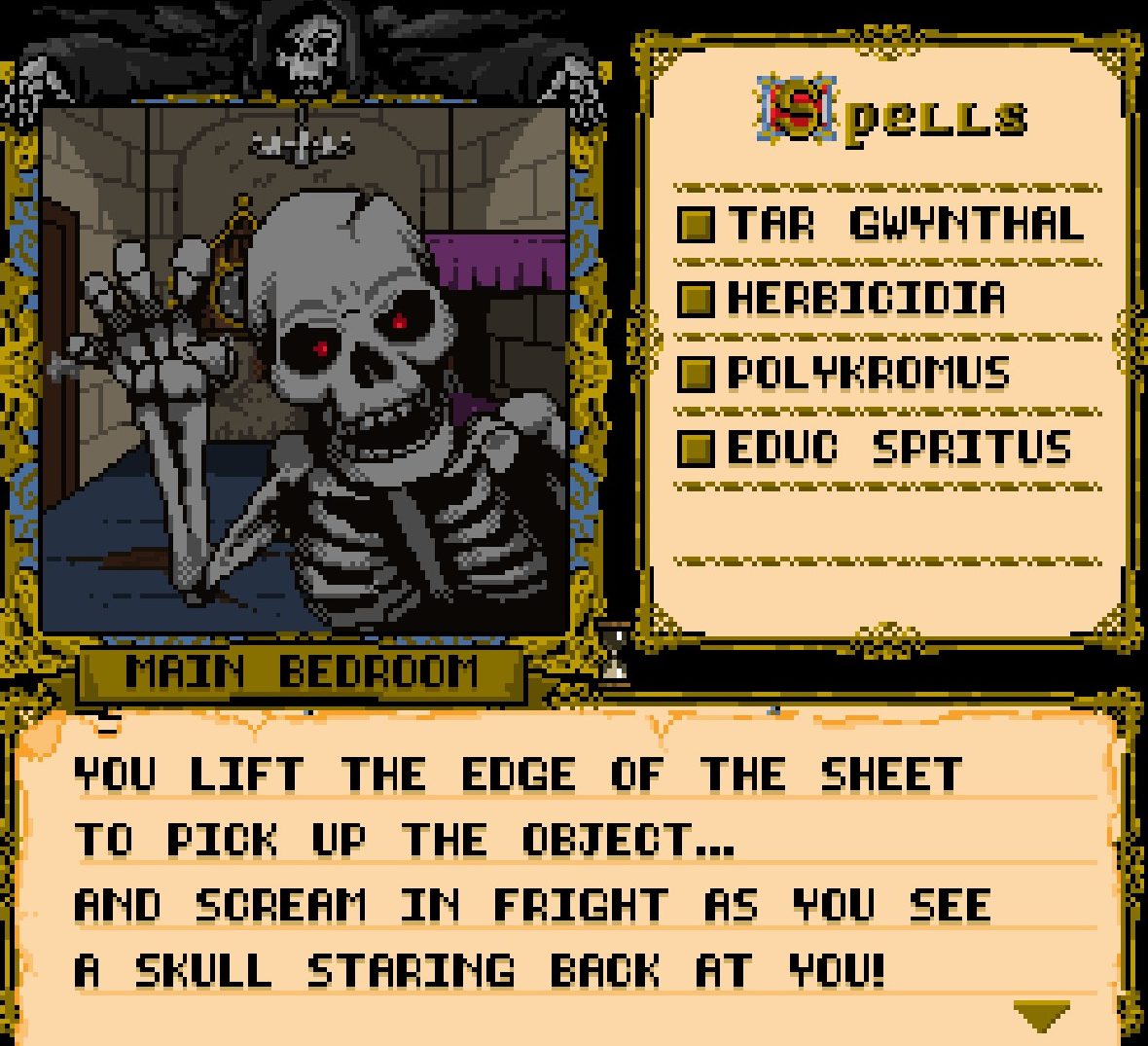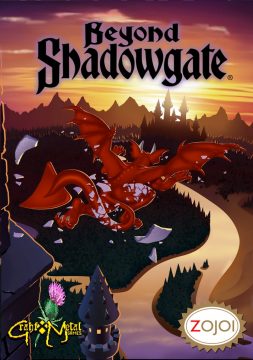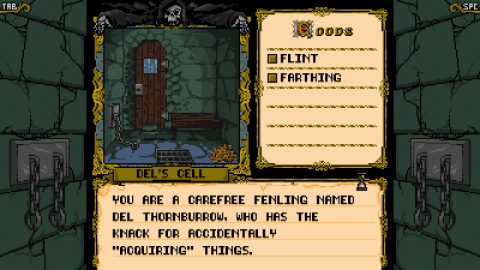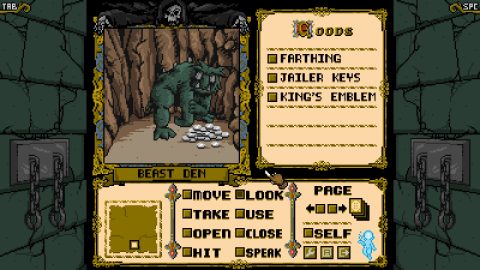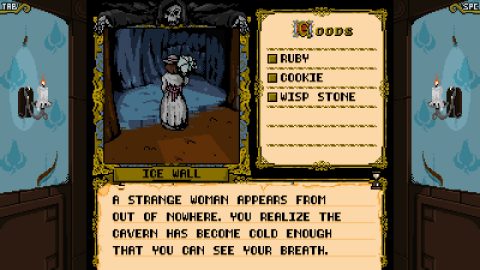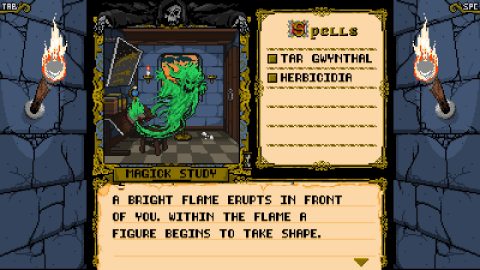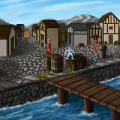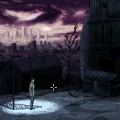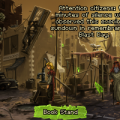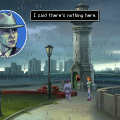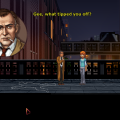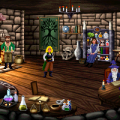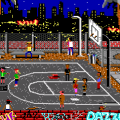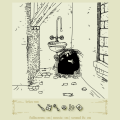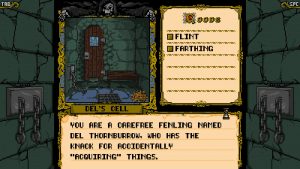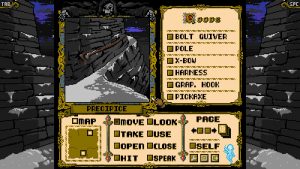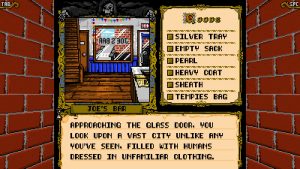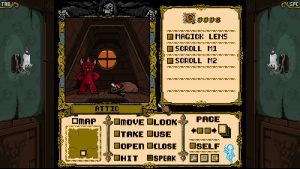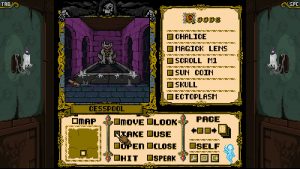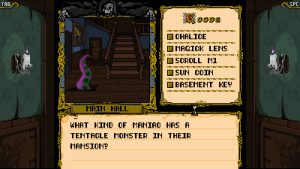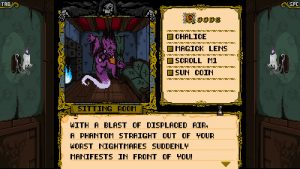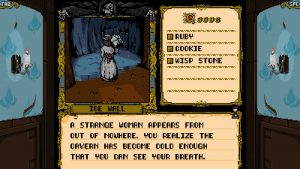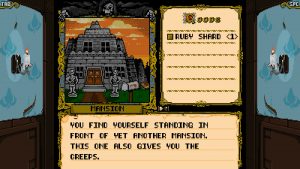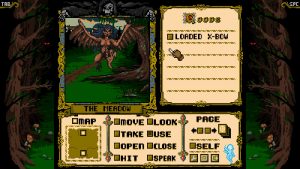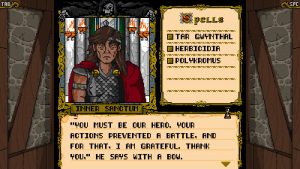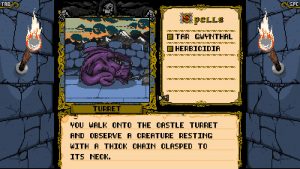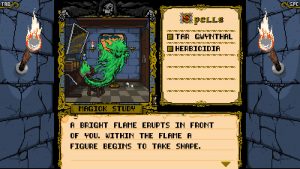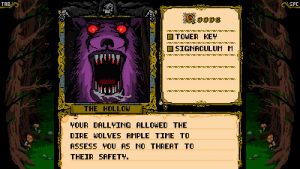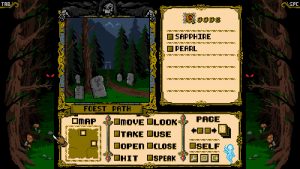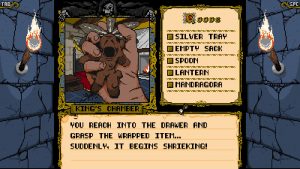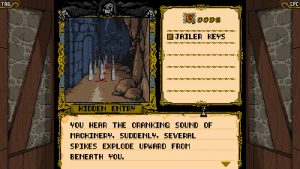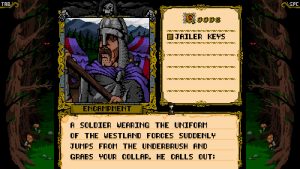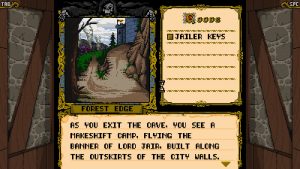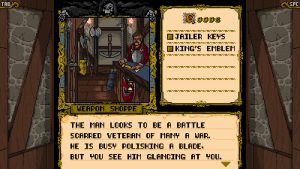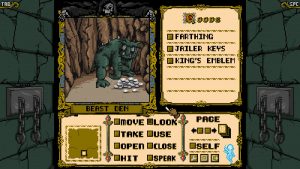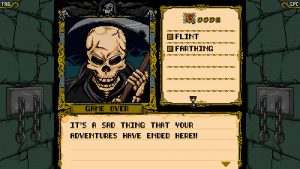While the ICOM MacVenture series may have begun on the Macintosh, it’s fair to say that most gamers experienced them through the NES ports. Shadowgate was the most popular of these, leading to a 2015 Remake and a 2021 VR spinoff. But 2024’s Beyond Shadowgate deepens the nostalgia, being a true sequel to the original NES game, done in the style of the original NES game. To create this game, Icom rightsholder Zojoi collaborated with indie team GrahfMetal Games, who created two point-and-click adventures based on the NES MacVentures, Spectacle and Infested.
The title is a little confusing. There was already another game called Beyond Shadowgate released for the TurboGrafx-16 back in 1993, which was also supposed to be the sequel to the original game. Back in the early 1990s, one of the developers of the original Shadowgate, David Marsh, had penned a whole script and design document for a sequel. He left the project and handed this off to the team of the TurboGrafx-16 game, who disregarded almost all of it and made their own thing. Despite sharing the same name, the 2024 game is closer to the original developer’s vision as well as being a more proper sequel.
This Beyond Shadowgate takes place a few decades after the original and stars a Fenling named Del. The adventure begins with him tossed in a castle dungeon, but the diminutive hero soon escapes and uncovers a conspiracy that threatens the kingdom, eventually sending him on a journey to defeat another great evil.
The style of the graphics, music, and interface is basically identical to the NES Shadowgate, though it uses a mouse for smoother pointing and clicking. The graphics have more color depth than the 16 colors that the NES could display, but it’s still very close. Del is also accompanied by a wisp, who occasionally provides hints but more often simply reminds you of your current objective. The sides of the screen have wallpapers based on the area you’re in, though you can also pull up keyboard shortcuts and an automap here. The music was composed by Orie Falconer, also of GrahfMetal’s previous games, who supplies some excellent tracks, though none quite as dramatic as the main theme from the original.
Beyond Shadowgate is also larger than the original game. Much larger. The NES game had a little over 40 rooms, while this one brags at having 250. Some of these are just transitional rooms that give the areas a larger presence, since the MacVentures still came from an era of limited disk space and had to use it wisely, But the game world itself is also much, much larger. The original Shadowgate was just the titular castle. Beyond Shadowgate begins in a dungeon before letting you explore the whole castle as well as the nearby town, through a forest, into a haunted mansion, across a desert wasteland, through snowy mountains, into the Mines of Mythrok (an are tie-in with the VR spinoff), and finally back to the original Castle Shadowgate itself. The script itself is also longer, with more written details and attempts to inject some personality into your otherwise mostly unseen player character. Even though the original Shadowgate had a “Speak” command, you barely used it to communicate because most other living creatures were trying to kill you, but here there are often other humans who you need to chat with.
The midgame also has two quests that send you into the haunted mansion of Uninvited and the 1930s-era Chicago Déjà Vu, two of the other MacVenture games. The sections are brief but contain references to the most memorable parts of these games, like the skeleton Scarlet O’Hara and the vicious sewer alligator. The dimension jumping premise is a little silly even considering the context, especially since they seem to have been tacked on due to meeting crowdfunding goals, but without any proper modern sequels or remakes to either of these games, they’re definitely fun diversions for fans. And while it’s not an Icom game, keep an eye out for a purple tentacle from the Maniac Mansion sequel!
Shadowgate was most well known for the crazy and often sudden ways it would kill your character, which was also pretty standard in adventure games through the early and mid-1980s. Beyond Shadowgate continues this, with more than enough ways for poor Del to meet a grisly end. Dying merely sends you back a few moves so there’s no real penalty, and really half the fun is discovering all of the ways you can get gruesomely slaughtered. New to this game are timed sections, where the screen flickers red and you need to make a quick decision or face death. Most of the time the solution is simply to move to another room, but they do give the adventure an extra bit of intensity. Unlike the original Shadowgate, you don’t have to worry about collecting torches, and there’s no worries of dead ends or unwinnable situations, making for an adventure that encapsulates all of the goofy threats of the original without most of its frustrations.
Beyond Shadowgate is at its best when it’s surrounding you with these threats, as it recalls the original title. However, it sags a bit when trying to further flesh out its world. An early section is a long fetch quests between shops that isn’t terribly interesting. And a late game quest gives you a quick travel function and asks that you scour previous areas to hunt for souls, which briefly kills the pacing.
The puzzles are generally logical, though the game expects that you’ll examine pretty much anything for clues. This is a downside of the larger game world, because there’s so many more screens that you need to examine. There’s only so much detail that you can fit into a frame that’s roughly 110×110 pixels in size, so it’s easy to miss essential things, but some quests are also obviously designed to really get you to pay attention to every detail on the screen. Arguably pixel hunting is one of those old school adventure game annoyances that should be left in the past, but at the same time, this is a retro throwback, and such things pretty much come with the territory.
The larger size of Beyond Shadowgate certainly gives it a much different vibe from the original. The first Shadowgate was this bizarre murder fun house that wasn’t particularly long but was very dense. It was also originally designed in 1987, with all of the technical and design constraints that entails. In contrast, this very late coming sequel can sometimes feel a little more relaxed just because you spend more time wandering around. But that’s a necessity in giving an experience that’s much larger and grander, one that’s also far more accommodating and less frustrating. Any other flaws are intentional in emulating a very particular style of adventure game, which Beyond Shadowgate does an excellent job with.
